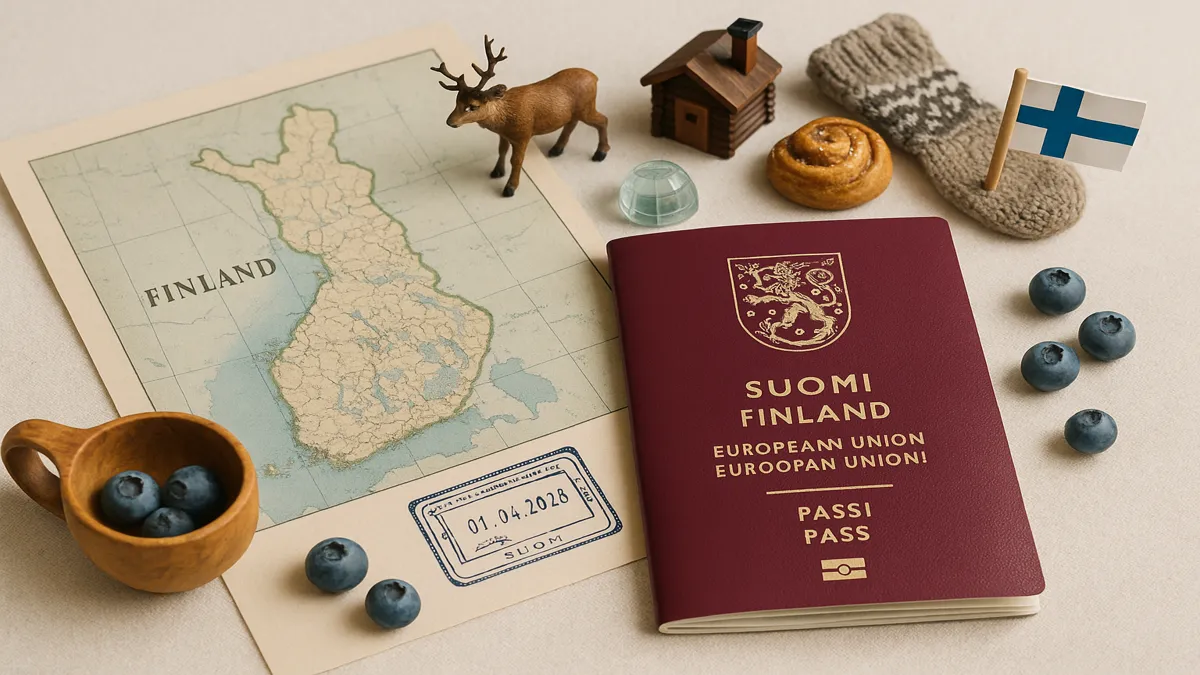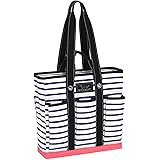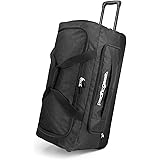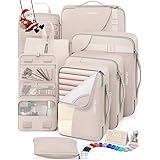Finland Travel Guide 2025: The Ultimate Handbook for First-Time Visitors
Dreaming of a winter wonderland where the Northern Lights dance across the sky and reindeer roam free? Or perhaps a summer escape filled with endless daylight and serene lakes? Welcome to Finland, a land of captivating contrasts and pure, unadulterated nature. This ultimate handbook is designed specifically for first-time visitors in 2025, providing you with essential tips, practical advice, and comprehensive insights to ensure your journey is smooth, memorable, and truly magical.
We\’ll cover everything from when to go and where to stay, to how much it costs and the best ways to experience iconic Finnish traditions like the sauna. Get ready to unlock the magic of Finland!
Table of Contents
- 1. Why 2025 Is the Best Year to Visit Finland
- 2. Best Time to Travel by Season
- 3. Top Destinations for First-Time Visitors
- 4. Where to Stay: Budget to Luxury
- 5. First-Time in Finland: What You Need to Know
- 6. Solo Travel in Finland
- 7. Traveling Finland with Family or as a Senior
- 8. Digital Nomads in Finland
- 9. How Much Does a Trip to Finland Cost?
- 10. Getting Around: Trains, Flights, Cars
- 11. Must-Try Foods and Cultural Tips
- 12. Sample Itineraries in our Finland Travel Guide
- 13. Travel Tools, Resources & Safety
- 14. FAQs for First-Time Visitors
- 15. What’s Next? More Guides to Explore
1. Why 2025 Is the Best Year to Visit Finland
2025 presents a unique and opportune moment for your inaugural Finnish adventure. The country continues to be a global leader in sustainable tourism, offering authentic experiences that connect you deeply with its pristine nature. There\’s a growing trend towards “slow travel,” and Finland\’s tranquil landscapes are the perfect antidote to a fast-paced world.
Furthermore, Finland consistently ranks as one of the happiest countries in the world, and you\’ll feel that positive, welcoming energy from the moment you arrive. It\’s a destination that offers both thrilling adventures like husky sledding and serene moments of quiet reflection in a traditional sauna.
Crucially for first-time visitors, the implementation of the European Travel Information and Authorisation System (ETIAS), which would require pre-travel authorization for visa-exempt visitors, has been delayed. While the Entry/Exit System (EES) is expected to launch in October 2025, ETIAS is now projected to begin in late 2026. This means that for your 2025 trip, the current visa-exempt entry rules will remain in effect, simplifying your pre-trip preparations.
2. Best Time to Travel by Season
Choosing the right time to visit Finland is key, as the experience changes dramatically with the seasons. It\’s a country of two distinct faces: the winter wonderland and the land of the midnight sun.
Winter (December to March )
- Pros: The quintessential Finnish experience. Snow-covered landscapes, the best chance to see the Northern Lights, husky sledding, reindeer sleigh rides, and the magic of Christmas in Lapland.
- Cons: Very cold temperatures (can drop below -20°C / -4°F), short daylight hours (or none at all in the far north), and higher prices for winter activities.
- Best For: Northern Lights hunters, Christmas enthusiasts, winter sports lovers, and anyone seeking a true Arctic adventure.
Spring (April to May)
- Pros: Melting snow reveals budding nature, days get rapidly longer, and there are fewer crowds. It\’s a time of transition and awakening.
- Cons: Can be a “muddy” season as the snow melts. Weather is unpredictable.
- Best For: Experiencing the transition from winter to summer, bird watching, and enjoying the increasing daylight.
Summer (June to August)
- Pros: Long daylight hours, with the Midnight Sun in the north (the sun doesn\’t set at all). Warm weather, perfect for hiking, kayaking, and enjoying Finland\’s thousands of lakes. Numerous music and cultural festivals.
- Cons: Mosquitoes can be a nuisance, especially near lakes and forests. Peak domestic travel season.
- Best For: Outdoor enthusiasts, festival-goers, and those who want to experience the unique phenomenon of the Midnight Sun.
Autumn (September to November)
- Pros: Stunning autumn foliage (“ruska”) creates a colorful landscape, perfect for hiking. The Northern Lights season begins again in September. It\’s a quieter, more contemplative time to visit.
- Cons: Weather becomes cooler and wetter. Days get shorter.
- Best For: Hiking, photography, and a good chance to see the Northern Lights without the extreme cold of winter.
Recommendation for First-Timers: For the magical winter experience, aim for December-March. For endless daylight and outdoor activities, choose June-August.
3. Top Destinations for First-Time Visitors
For your first Finnish adventure, it\’s wise to focus on destinations that offer a blend of iconic experiences, natural beauty, and cultural highlights. These places provide an excellent introduction to what makes Finland so special.
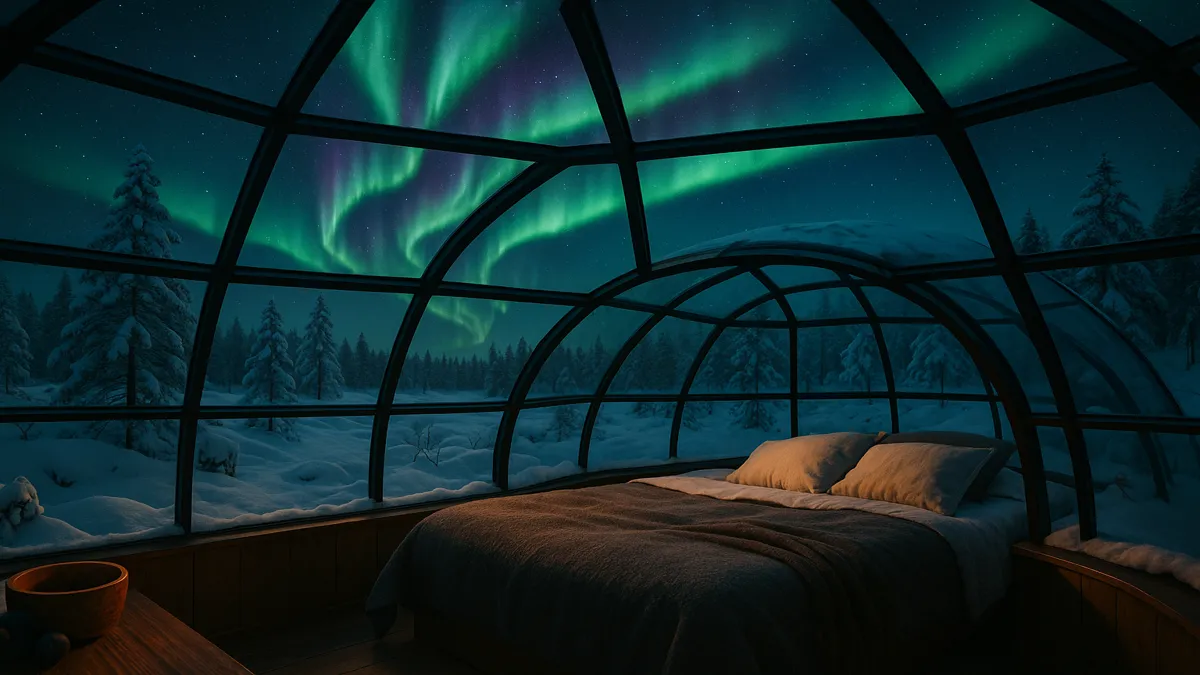
- Helsinki: The Vibrant Capital. A beautiful seaside city known for its stunning design, architecture, and numerous islands. Explore the Suomenlinna Sea Fortress, visit the unique Temppeliaukio Rock Church, and relax in a public sauna. Helsinki is a fantastic, modern starting point.
- Rovaniemi (Lapland ): The Official Hometown of Santa Claus. The gateway to the Arctic, Rovaniemi is a must-visit, especially in winter. Meet Santa Claus at the Santa Claus Village, cross the Arctic Circle, and visit reindeer and husky farms.
- Levi & Saariselkä (Lapland): Northern Lights & Winter Sports. These are prime locations for chasing the Aurora Borealis. They offer excellent ski resorts, a wide range of winter activities, and unique accommodations like glass igloos.
- Finnish Lakeland: A Maze of Blue and Green. The largest lake district in Europe, this region is perfect for a summer escape. Rent a cottage, go kayaking or fishing, and enjoy the tranquility of nature under the Midnight Sun.
- Turku & Archipelago: History and Island Hopping. Finland\’s oldest city, Turku, offers a charming riverside setting and a medieval castle. From here, you can explore the stunning Archipelago National Park, with thousands of islands accessible by ferry or bike.
Tip: Consider combining Helsinki with a trip to Lapland for a perfect mix of city culture and Arctic adventure. Domestic flights or overnight trains make this combination easy and popular.
Looking for the best hotel or flight deals?
Plan your trip with ease using the Expedia search tool below. From charming boutique hotels to luxury resorts, this widget helps you compare top options in seconds — flights included!
4. Where to Stay: Budget to Luxury
Finland offers a diverse range of accommodation, from unique Arctic experiences to stylish city hotels. Your choice will greatly depend on your destination and travel style.
- Glass Igloos/Arctic Resorts:
- Best For: A once-in-a-lifetime experience, especially for viewing the Northern Lights from the comfort of your bed.
- What to Expect: Heated glass-domed rooms, often part of a larger resort with restaurants and activity booking services. Found primarily in Lapland.
- Pros: Unforgettable views, unique experience.
- Cons: Very expensive, book far in advance.
- Hotels:
- Best For: Travelers seeking comfort, convenience, and a range of amenities.
- What to Expect: From stylish design hotels in Helsinki to cozy family-run hotels in smaller towns. Quality is generally high.
- Pros: Reliable quality, good service, comfortable.
- Cons: Can be pricey, especially in city centers.
- Cottages (Mökki ):
- Best For: A truly Finnish experience, especially in summer in the Lakeland region. Ideal for families, groups, or those seeking tranquility.
- What to Expect: Private wooden cabins, often by a lake or in a forest. Most come with their own private sauna.
- Pros: Privacy, connection with nature, authentic experience.
- Cons: Often require a car for access, self-catering.
- Hostels & Guesthouses:
- Best For: Budget travelers and solo travelers.
- What to Expect: Clean, well-maintained, and safe. Many offer private rooms in addition to dorms, as well as shared kitchens and saunas.
- Pros: Cheapest option, great for socializing.
- Cons: Less privacy, shared facilities.
- Apartments/Vacation Rentals (e.g., Airbnb):
- Best For: Families, groups, or those who prefer a local experience and self-catering.
- What to Expect: Fully furnished apartments, common in cities like Helsinki.
- Pros: More space, privacy, ability to cook your own meals.
- Cons: Less service than hotels, check-in can be less flexible.
Booking Tips:
- Book in Advance: This is crucial for unique accommodations like glass igloos, which can be fully booked a year or more ahead.
- Location is Key: In cities, stay near public transport. In Lapland, consider if you want to be in a resort with easy access to activities or somewhere more remote for better Northern Lights viewing.
5. First-Time in Finland: What You Need to Know
Navigating a new country is always easier with a little preparation. Here\’s what every first-timer needs to know for a smooth Finnish journey.
Visa & Entry Requirements (ETIAS Update for 2025)
- Schengen Area: Finland is part of the Schengen Area, allowing visa-free travel for up to 90 days within any 180-day period for many nationalities (e.g., US, Canadian, Australian citizens).
- ETIAS Delay: As of 2025, the European Travel Information and Authorisation System (ETIAS) is not yet in effect. It is now projected to launch in late 2026. This means that for your 2025 trip, if you are from a visa-exempt country, you will not need to apply for ETIAS.
- Passport Validity: Ensure your passport is valid for at least six months beyond your intended departure date from the Schengen Area.
Currency & Money
- Euro (€): The Euro is the official currency in Finland.
- Credit/Debit Cards: Widely accepted everywhere. Contactless payment is very common. You can often go days without needing cash in cities.
- ATMs (Otto): Readily available. Withdraw cash from bank ATMs to avoid excessive fees.
- Carrying Cash: It\’s wise to carry a small amount of cash for very small purchases or in remote rural areas, but it\’s not as essential as in some other European countries.
- Tipping: Tipping is not customary or expected in Finland. Service charges are included in bills. You can round up a taxi fare or leave a small amount for exceptional service, but it\’s not required.
Language & Communication
- Official Languages: Finnish and Swedish.
- English Proficiency: Excellent. The vast majority of Finns, especially younger generations and those in the service industry, speak fluent English. You will have no problem communicating.
- Basic Phrases: Learning “Hei” (hello) and “Kiitos” (thank you) is a polite gesture that will be appreciated.
Cultural Etiquette
- Personal Space: Finns value their personal space and are generally more reserved than many other cultures. Don\’t be surprised by quiet moments in conversation.
- Punctuality: Being on time is highly valued.
- Sauna Etiquette: The sauna is a sacred place. It\’s normal to go in nude (though swimsuits are common in public/mixed saunas). Genders are usually separated. It\’s a place for relaxation, not loud conversation.
- Greetings: A firm handshake and direct eye contact are the standard greeting.
Safety & Scams
- General Safety: Finland is one of the safest countries in the world, with very low crime rates. It\’s very safe for tourists, including solo female travelers.
- Scams: Tourist scams are extremely rare.
- Emergency Numbers: The universal emergency number in Finland (and Europe) is 112 for police, ambulance, and fire services.
Packing Essentials
- Universal Adapter: Finland uses Type F plugs.
- Layered Clothing: Essential for all seasons. In winter, this means thermal underwear, fleece mid-layers, and a high-quality waterproof/windproof outer layer.
- Waterproof Boots: A must for winter (insulated) and useful in other seasons.
- Winter Accessories: Warm hat, gloves/mittens, scarf, and wool socks are non-negotiable for a winter trip.
- Reusable Water Bottle: Finnish tap water is among the purest in the world and is perfectly safe to drink.
As an Amazon Associate, we earn from qualifying purchases.
Finland is an outstanding destination for solo travelers. Its incredible safety record, efficient public transport, and high English proficiency make it very easy to navigate alone. The Finnish respect for privacy and personal space can also make it a comfortable place for those who enjoy solitude.
Whether you\’re exploring Helsinki\’s design district or joining a multi-day husky safari in Lapland, you\’ll find a welcoming and secure environment. Organized tours for activities like chasing the Northern Lights are a great way to meet fellow travelers if you\’re seeking company.
7. Traveling Finland with Family or as a Senior
Traveling with Family
- Kid-Friendly Attractions: Finland is a magical destination for children. The Santa Claus Village in Rovaniemi is a dream come true. Many museums have interactive exhibits, and the abundance of nature provides a giant playground.
- Accommodation: Cottages and apartments are great options for families, providing more space and self-catering facilities.
- Winter Gear: For winter trips, many activity providers offer thermal suits and boots for children, but ensure you bring your own base layers.
Traveling as a Senior
- Accessibility: Cities like Helsinki are generally accessible, with modern public transport. However, be mindful of snow and ice in winter, which can make walking difficult.
- Pacing: Opt for a slower pace. Finland\’s unhurried atmosphere is perfect for relaxed travel.
- Discounts: Many museums, attractions, and public transport systems offer senior discounts. Always ask!
- Comfort: Prioritize comfortable, warm, and waterproof footwear. Guided tours can be a convenient and comfortable way to see the sights, especially in Lapland.
8. Digital Nomads in Finland
Finland is an attractive, though expensive, destination for digital nomads. It offers an exceptionally high quality of life, world-class internet infrastructure, and a safe, clean environment. While it doesn\’t have a dedicated digital nomad visa like some countries, EU citizens can work freely, and others may be able to use long-stay visas depending on their circumstances.
Helsinki is the main hub, with numerous co-working spaces and a vibrant tech scene. The culture values a healthy work-life balance, and the easy access to nature provides a perfect way to unwind after a day of work.
9. How Much Does a Trip to Finland Cost?
Let\’s be upfront: Finland is one of the more expensive countries in Europe. Careful budgeting is key, especially if you\’re planning a trip to Lapland with its pricey activities. Here\’s a general breakdown to help you plan.
Daily Cost Estimates (Per Person, excluding major activities )
- Budget Traveler: €70-120 / $75-130 USD per day
- Accommodation: Hostels, budget guesthouses.
- Food: Supermarket meals, cooking in hostels, affordable lunch buffets.
- Transport: Public transport, walking.
- Mid-Range Traveler: €150-250 / $165-275 USD per day
- Accommodation: Mid-range hotels, Airbnb.
- Food: Mix of cooking, casual restaurants, cafes.
- Transport: Public transport, some inter-city trains.
- Luxury Traveler: €300+ / $330+ USD per day
- Accommodation: Luxury hotels, glass igloos.
- Food: Fine dining, frequent restaurant meals.
- Transport: Taxis, private transfers, flights.
Cost of Popular Activities (Approximate)
- Husky Safari (2-3 hours): €100-€200 per person
- Reindeer Sleigh Ride: €50-€150 per person
- Snowmobile Tour: €100-€250 per person
- Glass Igloo: €400-€1000+ per night
Cost-Saving Tips
- Eat Lunch Out: Many restaurants offer affordable lunch buffets (*lounas*) on weekdays, which are much cheaper than dinner.
- Supermarkets: Utilize supermarkets like Lidl, S-market, and K-market for groceries and snacks.
- Drink Tap Water: It\’s free and delicious.
- Book in Advance: This applies to everything – flights, trains, accommodation, and especially popular Lapland activities.
- Travel Off-Season: Visiting in autumn or spring can offer significant savings compared to peak winter or summer.
10. Getting Around: Trains, Flights, Cars
Finland\’s vast size means you\’ll likely use a combination of transport methods. The network is modern, reliable, and efficient.
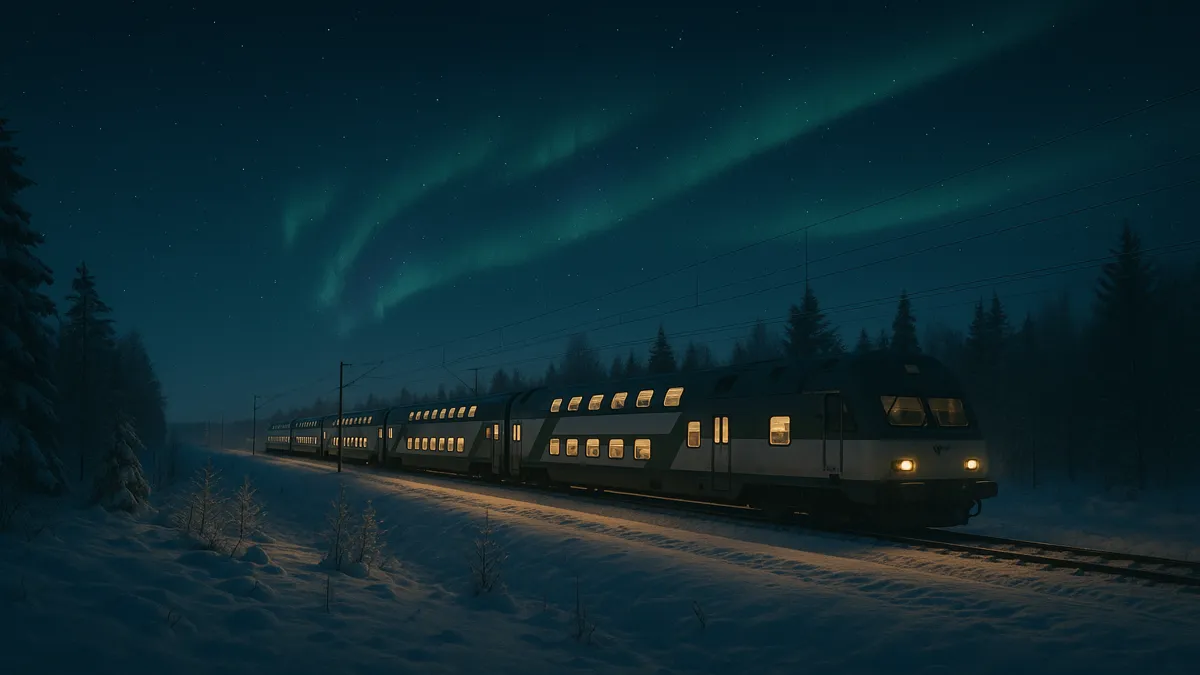
Trains
- Pros: Comfortable, scenic, and reliable. The double-decker trains operated by VR (the state railway) are excellent. The overnight “Santa Claus Express” from Helsinki to Rovaniemi is a popular and practical way to travel to Lapland.
- Cons: The network is most extensive in the south. Fewer lines run deep into the north.
- Booking: Book directly with VR or through aggregators like Trainline. Advance booking saves money.
Flights
- Pros: The fastest way to cover the long distance between Helsinki and Lapland (e.g., airports in Rovaniemi, Ivalo, Kittilä ).
- Cons: More expensive and less scenic than the train.
- Airlines: Finnair and Norwegian are the main domestic carriers.
Buses
- Pros: The most extensive network, reaching almost every corner of the country, including areas not served by trains. Often the cheapest option.
- Cons: Slower than trains for long distances.
- Operators: OnniBus and Matkahuolto are the main long-distance operators.
Cars
- Pros: Offers the most flexibility, especially for exploring the Lakeland region or remote parts of Lapland.
- Cons: Expensive (rental, fuel). Winter driving requires experience and caution; rental cars will be equipped with winter tires.
- Requirements: An International Driving Permit (IDP) may be required depending on your home country\’s license.
11. Must-Try Foods and Cultural Tips
Finnish cuisine is a reflection of its natural surroundings – simple, pure, and hearty. It\’s based on fresh ingredients from the forests and lakes.

Must-Try Foods
- Karjalanpiirakka (Karelian Pies): A thin rye crust filled with rice porridge or mashed potatoes, often topped with egg butter.
- Lohikeitto (Salmon Soup): A creamy and delicious soup with salmon, potatoes, and dill. A Finnish staple.
- Poronkäristys (Sautéed Reindeer): A traditional dish from Lapland, thinly sliced reindeer meat is sautéed and served with mashed potatoes and lingonberry jam.
- Korvapuusti (Cinnamon Buns): Finland\’s version of the cinnamon bun is a national treasure, perfect with a cup of coffee.
- Ruisleipä (Rye Bread): A dense, dark, and sour bread that is a cornerstone of the Finnish diet.
- Berries: In summer and autumn, enjoy an abundance of wild berries like blueberries (bilberries), lingonberries, and the prized cloudberry.
Cultural Tips
- Coffee Culture: Finns are among the world\’s top coffee consumers. “Kahvi” (coffee) is a social ritual.
- The Sauna: The sauna is not a luxury; it\’s a necessity and a huge part of the culture. There are over 3 million saunas in Finland for a population of 5.5 million!
- Silence is Golden: Finns are comfortable with silence. Don\’t feel the need to fill every pause in a conversation.
- Honesty and Modesty: Finns are typically very honest, direct, and modest. Bragging is not common.
12. Sample Itineraries in our Finland Travel Guide
These sample itineraries are designed for first-time visitors, focusing on popular routes and efficient travel. Feel free to customize them to your interests!
7-Day Winter Magic in Lapland
- Day 1-2: Helsinki. Arrive, explore the capital. Take the overnight Santa Claus Express train to Rovaniemi.
- Day 3-4: Rovaniemi. Meet Santa, cross the Arctic Circle, visit a reindeer farm.
- Day 5-6: Levi or Saariselkä. Travel further north. Enjoy a husky safari, snowmobiling, and chase the Northern Lights. Stay in a glass igloo for one night.
- Day 7: Departure. Fly back from Ivalo (IVL) or Kittilä (KTT) airport.
10-Day Summer Lakeland & City Tour
- Day 1-3: Helsinki. Explore the city and the Suomenlinna fortress.
- Day 4-6: Finnish Lakeland (e.g., near Savonlinna or Kuopio). Rent a car and a lakeside cottage. Enjoy swimming, kayaking, and sauna.
- Day 7-8: Turku & Archipelago. Drive to Turku, explore the old capital. Take a ferry trip into the archipelago.
- Day 9-10: Return to Helsinki. Enjoy a final day in the capital before departure.
13. Travel Tools, Resources & Safety
Equipping yourself with the right tools and knowledge is paramount for a safe and enjoyable Finnish adventure, especially in the Arctic conditions of winter.
Essential Travel Tools & Apps
- Google Maps/Citymapper: Indispensable for navigation.
- Aurora Alert Apps (e.g., My Aurora Forecast): Essential for Northern Lights hunters, providing forecasts and real-time alerts.
- VR Matkalla: The official app for booking train tickets in Finland.
- Google Translate: While English is widespread, it can be useful for reading product labels or obscure signs.
Important Resources
- VisitFinland.com: The official tourism website, full of inspiration and practical information.
- Nationalparks.fi: The official site for Finland\’s national parks, with trail maps and safety info.
Safety & Health
- Travel Insurance: Absolutely essential. Ensure it covers winter sports and potential travel disruptions due to weather.
- Winter Safety: Dress appropriately for the cold to prevent frostbite and hypothermia. Listen to guides during activities like snowmobiling. Be aware of icy roads if driving.
- Emergency Contacts: Program the universal European emergency number 112 into your phone.
14. FAQs for First-Time Visitors
Here are answers to some of the most common questions first-time visitors to Finland have:
- Q: Is English widely spoken in Finland?
- A: Yes, exceptionally so. You will have no issues communicating in English in all but the most remote areas.
- Q: Is Finland expensive?
- A: Yes, Finland is one of the more expensive countries in Europe. Budgeting for accommodation, food, and especially activities in Lapland is crucial.
- Q: What are my chances of seeing the Northern Lights?
- A: In Finnish Lapland, from September to March, on a clear night, your chances are very good. They are visible on average every other night. However, it is a natural phenomenon and never guaranteed.
- Q: Do I need a visa for Finland in 2025?
- A: For most citizens from countries like the US, Canada, and Australia, no visa is required for short tourist stays. The ETIAS system is now projected to begin in late 2026, so it won\’t be needed for 2025 trips.
- Q: What is the best way to travel to Lapland from Helsinki?
- A: The overnight “Santa Claus Express” train is a popular and scenic option that saves on a night\’s accommodation. Flying is the fastest way.
15. What’s Next? More Guides to Explore
Congratulations on taking the first step towards your unforgettable Finnish adventure! This handbook has provided a comprehensive overview, but the journey of discovery doesn’t end here.
Happy travels, and enjoy your magical journey through Finland!
Related Articles to Inspire Your Next Adventure:
🇪🇺 Western Europe
🇪🇺 Southern Europe
🇪🇺 Northern Europe
🇪🇺 Central Europe
🇪🇺 Eastern Europe & Baltics
🌍 Continental Overview
References:
European Union. (2025, April 14). Revised timeline for the EES and ETIAS. Retrieved from Official EU Site
